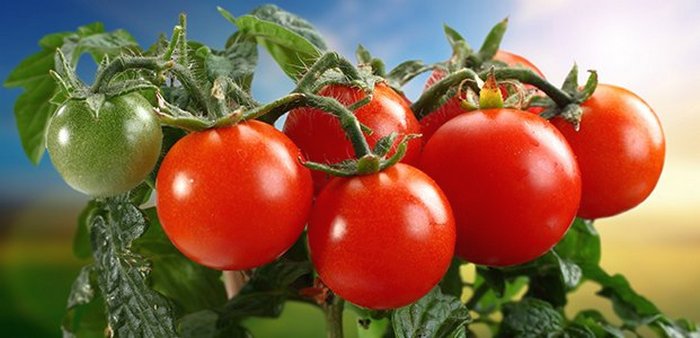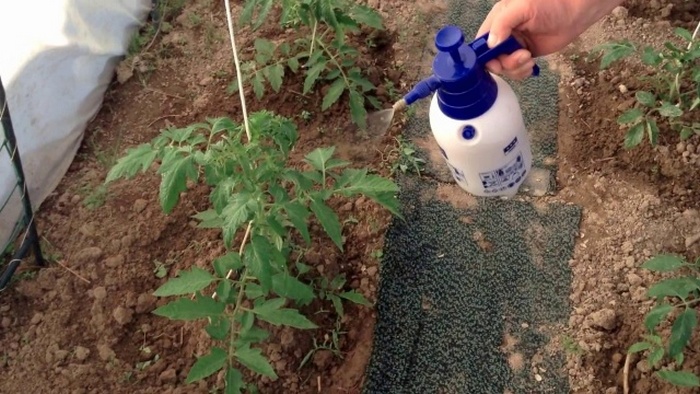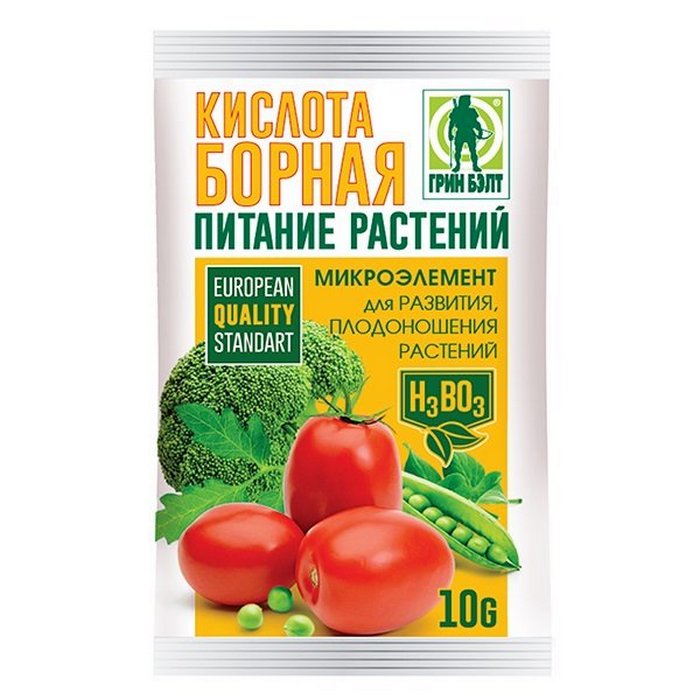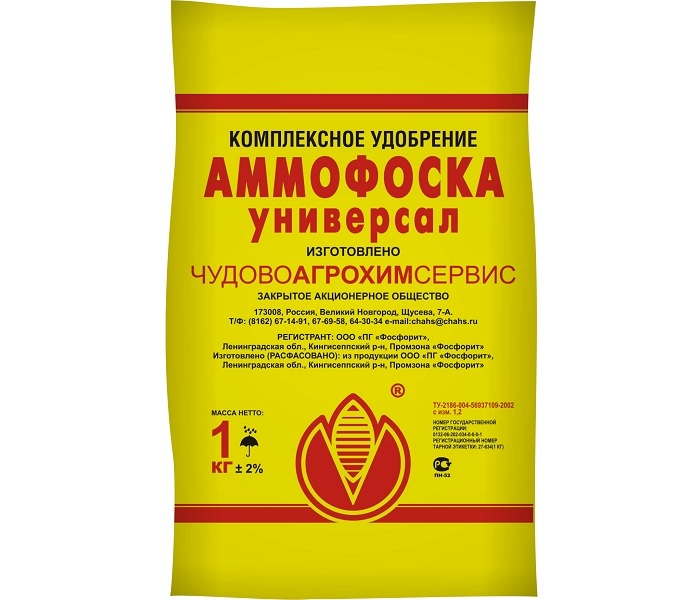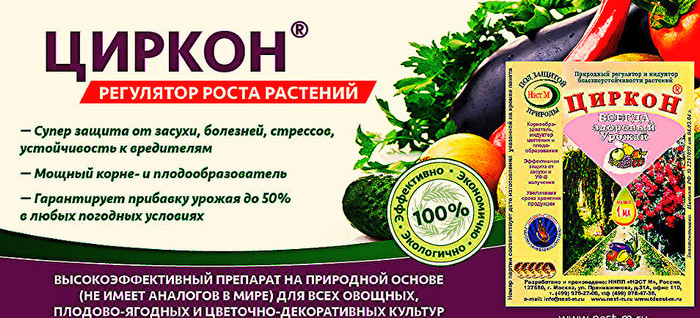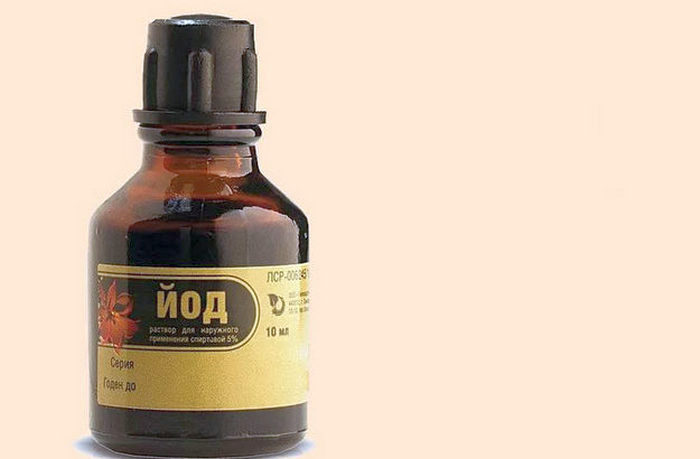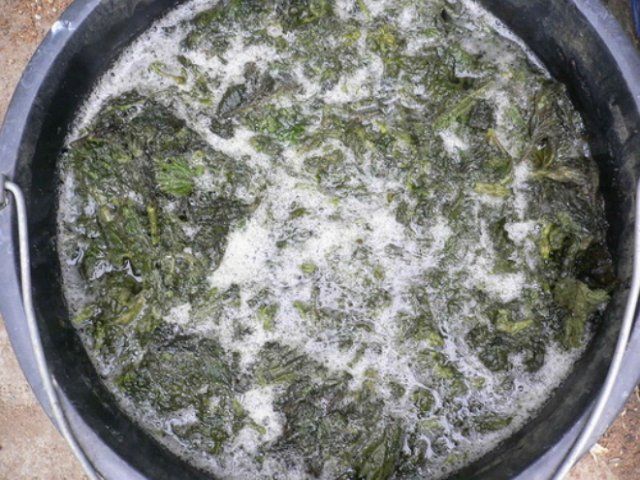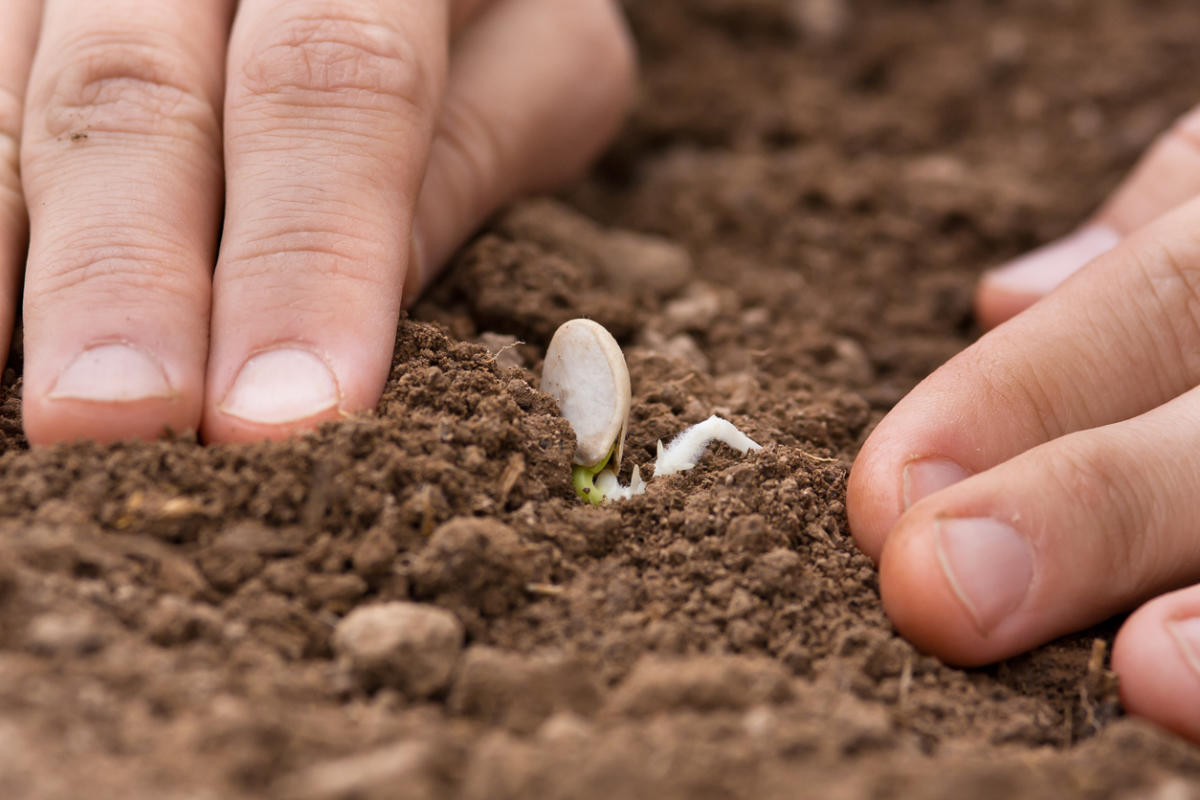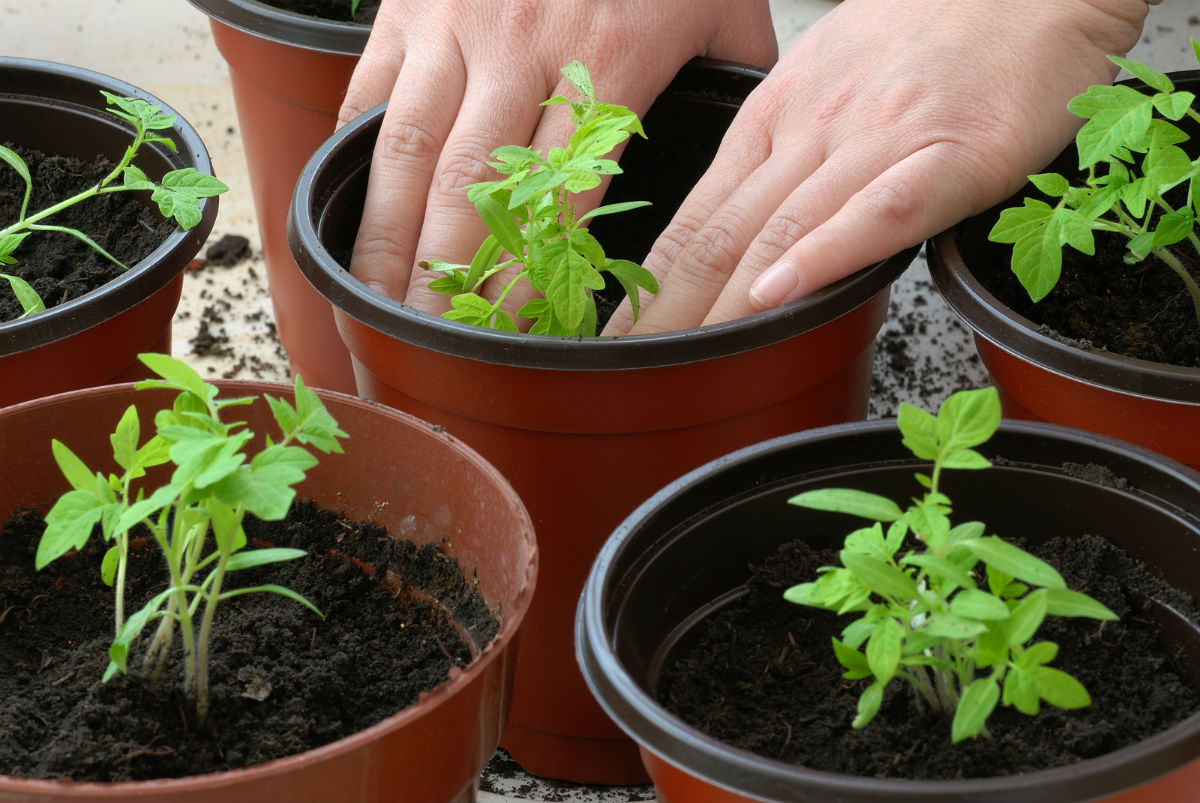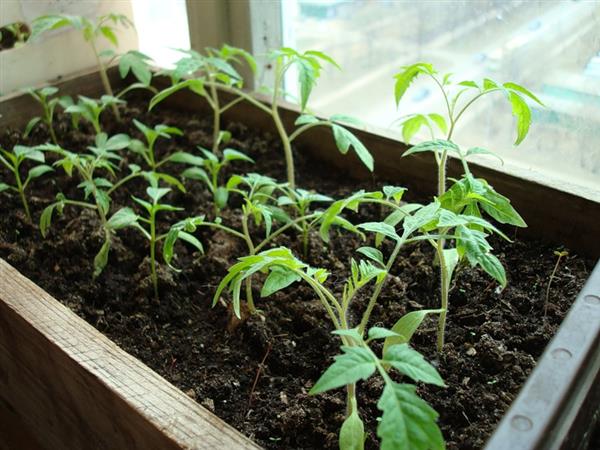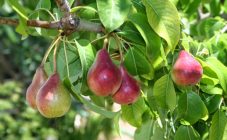Content:
Tomatoes are one of the crops most loved by gardeners. It is an annual plant belonging to the genus Solanaceae. You can grow them in the open field, but the best option is a greenhouse and film shelters. To obtain a high yield, regular feeding and good lighting are required. However, not all gardeners know how to feed tomatoes, and during what period it is necessary to do this for the full growth and development of tomatoes.
Fertilizers for open ground and greenhouses
Top dressing of tomatoes in the open field, namely when transplanting seedlings, is an important point that many gardeners miss and suffer from the resulting poor-quality harvest. Initially, you need to treat the soil with a solution of potassium permanganate to disinfect it. The answer to the question of how to feed tomatoes when planting in the ground is ordinary saltpeter. It is brought directly into the hole in 1 tbsp. spoon. This procedure is carried out in order to also facilitate the survival of seedlings.
When planting tomatoes in a greenhouse, it is also advisable to feed them. How to feed tomatoes in this case and what to use for this? Here you can use ordinary dry yeast. The tool is prepared as follows: for 3 bags of yeast, 2 tbsp is taken. a spoonful of granulated sugar, 0.2 kg of ash and 1 liter of liquid mullein. All components dissolve in 1 bucket of water. The infusion turns out to be concentrated, so it must be diluted (1 liter per 10 liters of water).
Further feeding of tomatoes
The first feeding is needed as soon as the tomatoes are planted. How to fertilize tomatoes during this period? Top dressing is root and foliar. Most often, gardeners use the first type, completely forgetting about the second, considering them useless. And completely in vain, since they have a better effect on the growth of tomatoes and fruiting.
Foliar feeding of tomatoes is extremely useful. Fertilizer enters the leaf immediately, is absorbed by it, and the plant receives additional nutrition much faster than if top dressing is applied under the root. But the benefits of root dressings are also obvious, the main thing is to produce them on time and use suitable means.
The first feeding of tomatoes is done 10 days after the pick. For further fertilization, the instruction is as follows: feed 1 time in 10 days. With this regime, plants will be resistant to diseases, easily resist pests, and the yield will be greater.
First feeding
During the growth of seedlings, special ready-made dressings are most often used. For example, it can be Zdorin for tomato and pepper seedlings or universal. It is recommended to breed in accordance with the instructions.
After the tomatoes are planted in a permanent place, the type of fertilizer changes. It depends on the fertility of the soil. If it is poor in nutrients, then organic and mineral fertilizers should be applied.
From organic matter, an infusion of mullein or bird droppings is recommended. Also, sprinkling the ground with ash with the next irrigation has a positive effect.You can make an infusion of herbs, let it ferment and use as a top dressing.
Of the mineral fertilizers in poorly fertile soil, nitrophoska and other complex fertilizers are suitable, if the soil is fertile, then potassium sulfate or potassium magnesium. The consumption of all these types of fertilizers is 1 tbsp. spoon for 1 bucket of water. Watering is carried out at the root.
Second feeding
The second feeding coincides with the flowering period of the second brush and the beginning of the formation of ovaries on it. How to feed tomatoes during this period?
For the second feeding, a whole complex of organic and mineral fertilizers is used. The following composition is prepared:
- 10 liters of mullein solution (can be replaced with chicken manure solution);
- 1 tbsp. a spoonful of any mineral fertilizer;
- 3 g of copper sulfate;
- 5 g of potassium permanganate.
The resulting solution needs to be fed to the tomatoes at the root. Solution consumption is:
- undersized tomatoes - 1 l;
- determinant tomatoes - 1.5 l;
- tall tomatoes - 2 l.
You can also make fertilizing that promotes the formation of ovaries. For these purposes, superphosphate has proven itself well (1 teaspoon per 5 liters of hot water, stir and cool). The solution is intended for root feeding.
Tomatoes are very responsive during this period for foliar feeding, when 1 g of boric acid and magnesium sulfate are diluted in 10 liters of water. Plants are sprayed with the solution.
The simplest and most affordable fertilizer during this period is ordinary ash, which is scattered on the soil surface. You can also prepare an infusion (10 teaspoons of ash per 10 liters of water, leave for 7 days). Such a top dressing, applied with watering, accelerates the growth of fruits.
Third feeding
The third feeding coincides with the period of active fruiting. Use the same composition as in the second feeding, but you must definitely pay attention to the appearance of the tomatoes. If there are few fruits, but there is a lot of green mass, then the nitrogen part is excluded from the fertilizer, or they are simply fed with ash.
Foliar dressing for sick tomatoes
What fertilizers are needed for tomatoes for foliar feeding, if the plants do not feel very comfortable in the open field?
If there is a slowdown in tomato growth, pallor of leaves and weakness of the stem, then use urea. To do this, dilute 1 teaspoon of fertilizer in 10 liters of water and spray it.
When flowers fall off, boric acid is used (for 10 liters of water, 1 teaspoon), and in case of insufficient lighting, calcium nitrate will help out (for 10 liters of water, 15 g).
If the plant looks weak, depleted, then after nitrogen dressing, foliar dressing is performed with urea and calcium nitrate (10 g of urea and 15 g of nitrate per 10 liters of water).
The best fertilizers for tomatoes
Many gardeners note the following fertilizers as irreplaceable helpers in growing tomatoes.
Borofoska
This tool is used in rainy weather, when nutrients are washed out of the soil, on sandy soils, and also if crops that absorb large amounts of phosphorus and potassium were grown at the site of tomato planting. It is allowed to be used as a top dressing throughout the summer. Allows tomatoes to replenish the deficiency of potassium, magnesium and phosphorus. The benefits are obvious: the yield increases by 20%, the fruits become larger, the flowering is longer. At the same time, the soil retains its supply of nutrients for the next season.
Ammofoska
A universal fertilizer that can be used everywhere. It contains nitrogen, phosphorus, potassium and sulfur. It is especially necessary to apply it on sandy, clayey and swampy soils.
Ammofoska as a fertilizer (used for tomatoes, peppers and cabbage) is justified at various times. So, when the question arises of how to fertilize tomatoes when planting in the ground, you can safely answer with Ammophos. It helps the plants withstand replanting better. Since it contains potassium, it can be safely applied during the periods of flowering and fruit setting, because it is at this time that tomatoes need potassium fertilizers.
Fertika
For infertile soil, you can buy Fertik. This is a relatively young drug that is produced in the Russian Federation, but Finnish raw materials are used. The product is available in small, pale red granules and in the form of a concentrated solution. Fertik is dissolved in the required volume of water, according to the instructions, and top dressing is carried out at the root. It can be applied from autumn as well.
Zircon
The preparation Zircon is very important for growing tomatoes. But it is not only a root former, and therefore it is used as a fertilizer for tomatoes during transplantation, but also increases resistance to diseases and is a growth regulator. Good for seed germination.
Baby
The Malyshok preparation is recommended to fertilize the soil both for seedlings and for an already adult plant. It contains all the elements necessary for good growth of nightshades. Its use has a positive effect on the growth and root formation of the plant, fast fruiting and helps tomatoes to adapt under stressful conditions.
Baikal
Do not lose sight of biofertilizers, one of which is Baikal. In practice, it has been proven that when growing tomatoes using this drug, you can get a rich harvest (from one bush to 150 kg). In order to achieve such success on your site, you need to act strictly according to the scheme:
- A container without a bottom for planting tomatoes with a volume of about 1 m² is made from a barrel or boards.
- Holes are drilled along the perimeter of the container for oxygen access.
- A 10-centimeter layer of urgasa is laid out at the very bottom.
- On it is the same layer of soil mixture, which consists of turf, biofertilizer Baikal, ordinary soil and EM compost, taken in equal proportions.
- In early May, 1 tomato seedling is planted under a film shelter in a prepared container.
- The lower leaves are cut off and after drying, another 10 cm layer of soil mixture is added.
- This procedure is carried out as the plants grow until the container is completely filled.
What will the gardener give growing tomatoes in this way:
- the bushes will have a very powerful root system;
- such a plant does not need to cut off the stepsons, therefore a real giant grows - a whole tomato tree;
- the first harvest will be a little late, not earlier than mid-July, but long-term fruiting (until mid-October), since such bushes are resistant to cold snaps.
Folk remedies
Not only mineral fertilizers for tomatoes are used in personal plots. Folk natural dressings are very popular. They contribute to proper development and long-term fruiting.
Iodine
Common medical iodine is commonly used for growing tomatoes. It promotes faster fruit ripening.
It can be used both in the greenhouse and in the open field. As soon as the planting is made to a permanent place, 2 weeks after the first feeding of the seedlings is carried out. In the future, it can be carried out every 2 weeks. In 1 bucket of water, dissolve 4 drops of a medicine and water the plant under the root. 1 plant will require up to 2 liters of solution.
Nettle
Top dressing of tomatoes outdoors is very important.An infusion of nettle is well suited for this. It contains many nutrients: potassium, magnesium and calcium.
To make it, you will need young nettles before they bloom. The greens are put into a bucket, compacted and filled with water. In this form, it should stand for 2-3 weeks. The container can be placed in the sun to speed up fermentation. The infusion must be stirred every 2-3 days.
Such a top dressing can be used weekly; after it has been introduced, mandatory watering is required. If you do not like the smell of fermentation of nettle, then valerian root can be added to the container with the solution.
Diseases of tomatoes and their prevention
In the process of caring for tomatoes, you need not only to think about how to feed the tomatoes, but also how to protect them from diseases and pests.
Most of all, tomatoes are susceptible to such diseases:
- mozakica;
- late blight;
- top rot;
- curl of leaves.
This list can be continued for a very long time. The main thing to understand is that the plant hurts less, proper care is very important. And in order to prevent the development of diseases, it is important to detect the first signs in a timely manner and either begin treatment or destroy diseased bushes.
Disease prevention also plays an important role. For these purposes, copper oxychloride, homa are suitable, which are diluted as a solution of the required concentration and sprayed with plants. You can combine this procedure with foliar feeding. It is an effective remedy for combating late blight, spotted rot and macrosporiosis - the main diseases of tomatoes.
Which of the above means - special ready-made from the store or folk - to choose, each gardener decides for himself. Some are sure that they have not yet invented anything better than the complex ones and prefer them, others do not want to water the garden with "chemistry", so they use ash and chicken dung according to the old-fashioned method. Both have pros and cons that must be weighed before root application or spraying of the bush.
